Solar eclipse of June 10, 1964
A partial solar eclipse occurred on June 10, 1964. A solar eclipse occurs when the Moon passes between Earth and the Sun, thereby totally or partly obscuring the image of the Sun for a viewer on Earth. A partial solar eclipse occurs in the polar regions of the Earth when the center of the Moon's shadow misses the Earth.
| Solar eclipse of June 10, 1964 | |
|---|---|
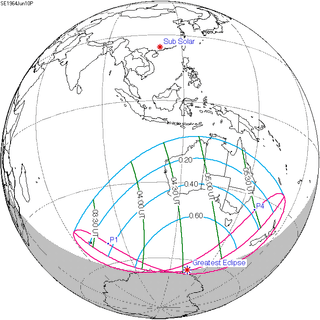 Map | |
| Type of eclipse | |
| Nature | Partial |
| Gamma | -1.1393 |
| Magnitude | 0.7545 |
| Maximum eclipse | |
| Coordinates | 65°S 135.9°E |
| Times (UTC) | |
| Greatest eclipse | 4:34:07 |
| References | |
| Saros | 117 (66 of 71) |
| Catalog # (SE5000) | 9430 |
Related eclipses
Solar eclipses of 1964–1967
This eclipse is a member of a 1964–1967 series at alternating nodes every 6 synodic months.
Note: Partial solar eclipses on January 14, 1964 and July 9, 1964 belong to the previous lunar year set.
| Solar eclipse series sets from 1964–1967 | ||||
|---|---|---|---|---|
| Ascending node | Descending node | |||
| Saros | Map | Saros | Map | |
| 117 |  1964 June 10 Partial |
122 | 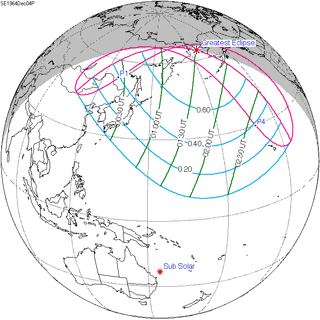 1964 December 4 Partial | |
| 127 |  1965 May 30 Total |
132 | 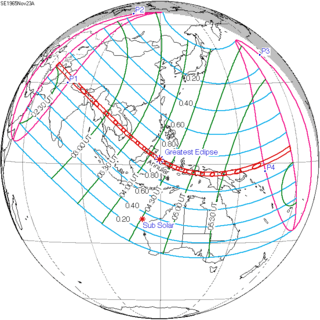 1965 November 23 Annular | |
| 137 | 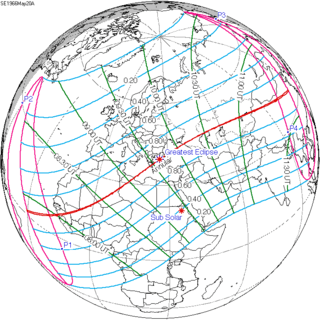 1966 May 20 Annular |
142 | 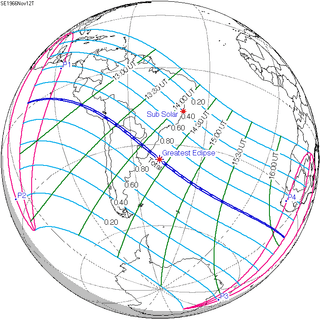 1966 November 12 Total | |
| 147 | 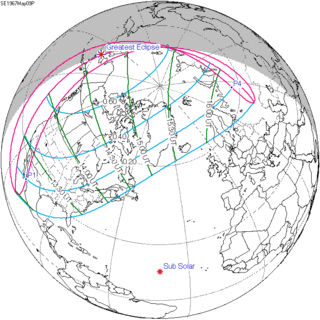 1967 May 9 Partial |
152 | 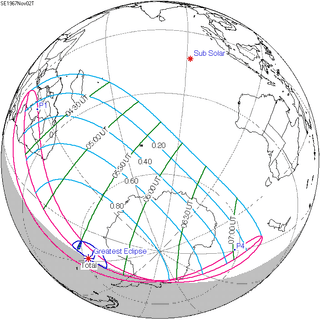 1967 November 2 Total (non-central) | |
Metonic series
The metonic series repeats eclipses every 19 years (6939.69 days), lasting about 5 cycles. Eclipses occur in nearly the same calendar date. In addition, the octon subseries repeats 1/5 of that or every 3.8 years (1387.94 days). All eclipses in this table occur at the Moon's ascending node.
| 21 eclipse events, progressing from south to north between June 10, 1964, and August 21, 2036 | ||||
|---|---|---|---|---|
| June 10–11 | March 27–29 | January 15–16 | November 3 | August 21–22 |
| 117 | 119 | 121 | 123 | 125 |
 June 10, 1964 |
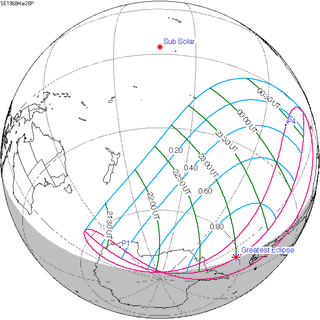 March 28, 1968 |
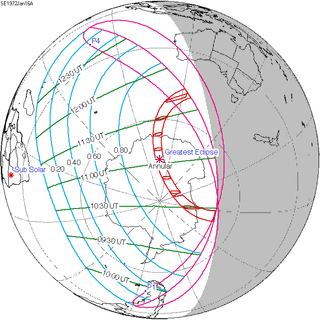 January 16, 1972 |
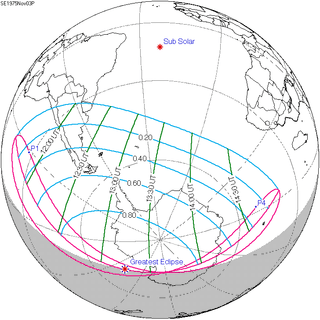 November 3, 1975 |
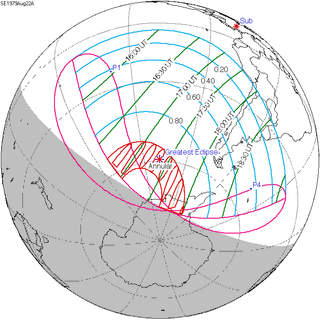 August 22, 1979 |
| 127 | 129 | 131 | 133 | 135 |
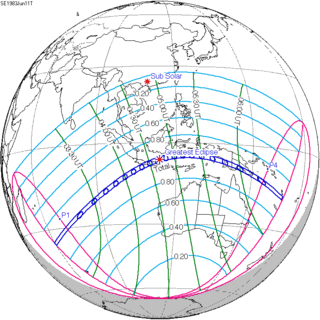 June 11, 1983 |
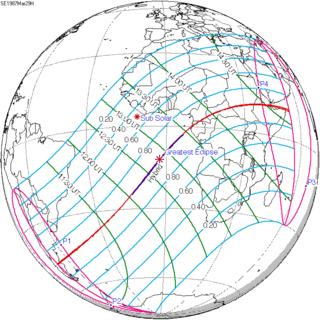 March 29, 1987 |
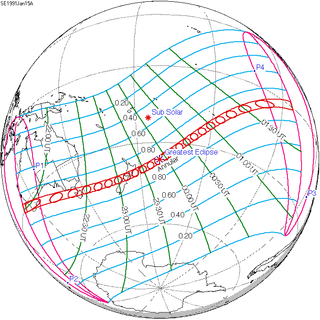 January 15, 1991 |
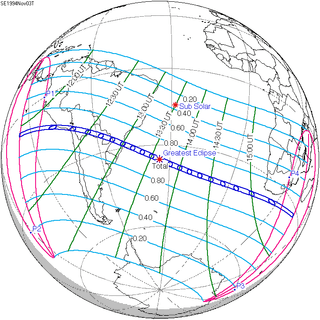 November 3, 1994 |
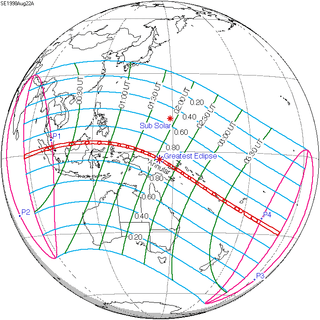 August 22, 1998 |
| 137 | 139 | 141 | 143 | 145 |
 June 10, 2002 |
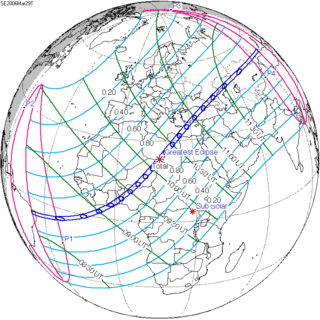 March 29, 2006 |
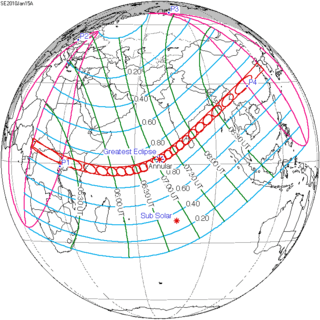 January 15, 2010 |
 November 3, 2013 |
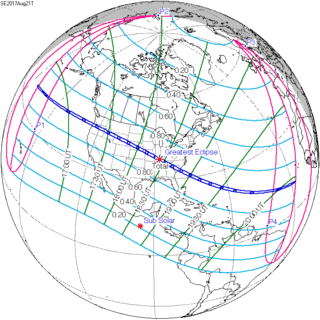 August 21, 2017 |
| 147 | 149 | 151 | 153 | 155 |
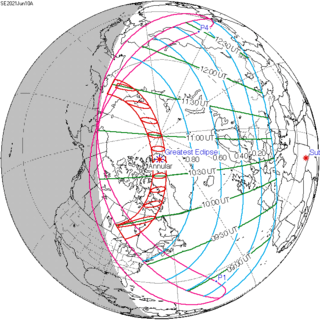 June 10, 2021 |
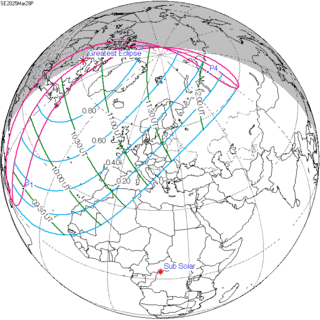 March 29, 2025 |
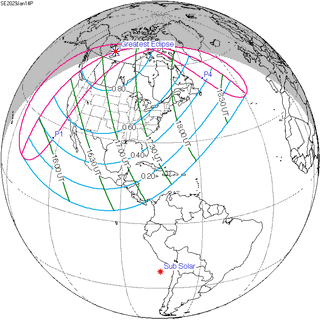 January 14, 2029 |
 November 3, 2032 |
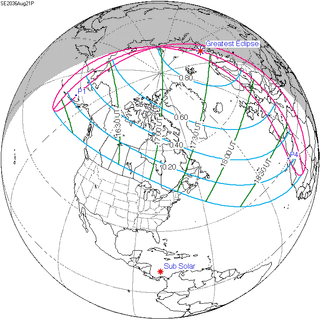 August 21, 2036 |
References
External links
- Earth visibility chart and eclipse statistics Eclipse Predictions by Fred Espenak, NASA/GSFC
.jpg)
